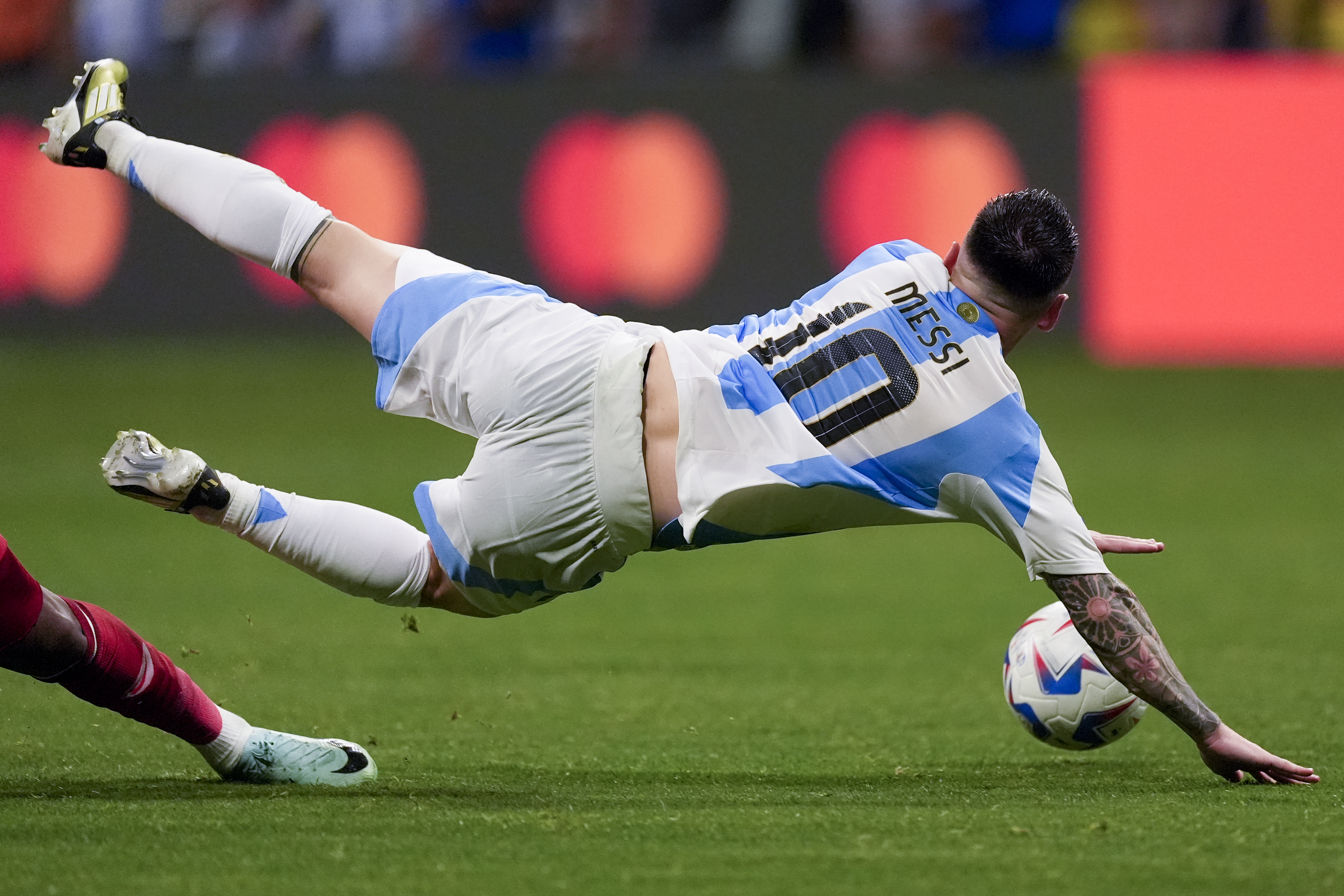
By ALANIS THAMES AP Sports Writer
MIAMI (AP) — South American soccer’s governing body maintained that the Hard Rock Stadium’s playing surface will be in great shape for the Copa America final on July 14 amid complaints during the group stage about grass at other fields used for the tournament.
The grass surface at the stadium of the NFL’s Dolphins in Miami Gardens was removed Sunday for a July 6 concert featuring the Colombian artist Feid. Installation of a new grass surface will begin on July 8 and is expected to be completed four days before the final of South America’s championship.
“We hope it is in excellent condition,” Maristela Kuhn, agricultural engineer of the South American Football Confederation and coordinator of the Copa America 2024 grass project, said Monday. “The same condition as it was for the first match.”
There were a pair of first-round games at Hard Rock. Uruguay beat Panama 3-1 on June 23 and Argentina defeated Peru 2-0 on Saturday.
Kuhn spoke to The Associated Press after a news conference in which she and other CONMEBOL officials explained Miami will be the only stadium to undergo changes to its grass. The switch was planned before the start of the tournament because of the concert.
After defending champion Argentina defeated Canada in the June 20 opener at Atlanta’s Mercedes-Benz Stadium, both teams criticized the grass field, which replaced the regular artificial turf. Argentina goalkeeper Emiliano Martínez called the field a “disaster.” Canada defender Kamal Miller said it seemed hollow.
Following Brazil’s 4-1 victory over Paraguay at Allegiant Stadium in Las Vegas on Friday, Brazil’s Vinícius Júnior said the Copa America “is always difficult because of the pitches.”
CONMEBOL officials said those complaints were caused by the grass’ visual appearance. In some parts of the field, ends of the grass clumps were visible but there were no differences in level, the officials said. At MetLife Stadium in East Rutherford, New Jersey, there were brown patches along the sideline.
“Aesthetics can give the wrong perception,” said Frederico Nantes, director of CONMEBOL competitions and operations. He explained tests were carried out before and after games to evaluate the field and how the ball moved and hit, and he noted they all had good results.
In the second game held in Atlanta, the joints of the grass were no longer visible, and since the look improved, no one spoke about the stadium, Kuhn said.
The Miami stadium maintains a grass surface through the NFL season, but six of 14 stadiums used in the tournament had grass pitches installed over an artificial surface. The fields also are slightly smaller than the international standard, 100 by 64 meters (109 by 70 yards) instead of 105 by 68 meters (115 by 74 yards).
Eight of the stadiums are sites of the 2026 World Cup and renovations have been planned allowing for the the larger fields in two years. For the World Cup, FIFA usually takes control of the stadiums about a month in advance.
CONMEBOL officials said the process of installing the temporary pitches for Copa America started a year ago. Grass grown in specially chosen nurseries are glued to plastic layers that adhere to the surface of the field. It is transported in trucks and placed through a process that takes into account every detail, from watering to sunlight to where the trucks pass that drop it off on the field, the organization said.
Nearly 1 million people will attend Copa America group stage matches. The most-attended game was Argentina’s match vs Chile that drew 81,106 at MetLife, site of the 2026 World Cup final. Forty percent of group stage games were sellouts.
